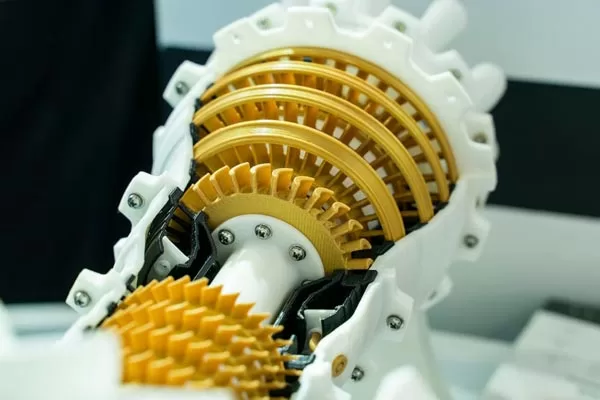The Six Biggest Innovations that Impacts Additive Manufacturing
Additive manufacturing and 3D printers have changed the way we make things. It’s less expensive, more efficient, and is becoming standard. There are a lot of benefits to this new manufacturing process, and it’s time for all businesses to embrace it. If you’re curious about additive manufacturing and how it will change the future of manufacturing, this article is for you.
Major Advancements in Additive Manufacturing
Here are the six major innovations that will drive additive manufacturing into the future.
Rise of smart factories
A highly automated factory that produces goods with little human labor is known as a “smart factory”. Smart factories can be built anywhere, even in typically expensive areas, because labor costs are minimal.
Using 3D printing, a modern smart factory may produce various goods using a streamlined, highly scalable manufacturing method. To allow scaling output up or down more easily in response to demand, manufacturing facilities can use a fully additive manufacturing model or take a hybrid approach, with traditional and 3D manufacturing existing side by side.
More businesses can adopt an agile manufacturing strategy, better meet customer demand, and eliminate the risk in production as more 3D printing smart factories go online.
Increase in the demand for customization
Numerous things, including clothing and medical equipment, might benefit from personalization. Most dental goods are made to order, with one or more units created to support the unique treatment strategy.
High-volume product customization is typically difficult and requires numerous iterations to move from a prototype to high-volume production. In addition, this strategy increases tooling and assembly costs for products with high SKU counts.
3D printing is an excellent alternative strategy to accommodate large SKU counts and enable customization. In addition, additive manufacturing facilities may more easily create bespoke goods because tooling is no longer necessary.
Smart factory-connected 3D printers that establish a direct cloud connection between additive manufacturing facilities and their clients, such as brand corporations, represent the future of additive manufacturing. You can order multiple custom goods on demand from the additive manufacturing site by brand or product firms.
Additionally, a quicker turnaround time opens new possibilities for supply chain and inventory management and product launch strategies, such as supplementing traditional manufacturing, localizing production to the consumer, or even releasing frequent batches of new/updated products.
3D printing is a competitive manufacturing option and becoming more affordable as high-mix, low-volume manufacturing.
Streamlined and simplified production
Output has increased with recent 3D printing technologies thanks to faster build times, larger build volumes, and substantially less post-processing. Technology improvements to DLP 3D printing techniques that have integrated larger build areas and faster Z-printing are one of the current enablers of greater simplicity and higher throughput.
Compared to earlier 3D printing technologies, DLP printing procedures require fewer stages and less post-processing. They can also eliminate or decrease assembly for complicated designs, sometimes increasing production efficiency by 50–90%.
Modern additive manufacturing companies prioritize “production-first” while developing scalable solutions that streamline the manufacturing process and speed up production.
Higher accuracy
The most sophisticated 3D printing systems offer great resolution using the same TV screen technology. In addition, the accuracy of the greatest 3D printing equipment can reach 50 microns.
As you can use them as building blocks to expand the print area without compromising performance, such as speed, as seen when scaling FDM 3D printing, optical processes are a crucial component of the future of additive manufacturing. In addition, accuracy, and the capacity to print minute features or components will continue to advance with more sophisticated projection screens and resin-printing methods.
Advanced materials
3D printing methods may accommodate almost any design or geometry. At additive manufacturing facilities, the availability of resins will be the determining factor for which you can produce products rather than the availability of tooling. If they have 3D printed materials, additive manufacturing facilities may make goods for various application sectors and industries.
One industry where versatility is evident is the dental industry, where a single printer can produce a wide range of dental products, including surgical guides, night guards, and aligners, using a variety of specialist dental resins.
Materials and resins for 3D printing are getting better and better all the time. As each facility has a wide variety of materials to support various product lines, the future of additive manufacturing will see more productive sites.
Intelligent and automated software
Manufacturing is becoming simpler thanks to advances in generative design, cloud computing, automation, and artificial intelligence (AI) software. For instance, advances in dental 3D printing software can heal models, and generative design can fill the gap between what is possible with traditional and additive manufacturing.
Customers can directly access accessible 3D printing machines for on-demand production using cloud software, which can aggregate and optimize manufacturing capacity among machines. In addition, to ensure constant production from machine to machine without a human operator, additive manufacturing software will soon become more predictive, identifying equipment needing maintenance or automatically adjusting printing parameters.

Partner with an Innovative 3D Printer
To offer more goods across all industries, additive manufacturing will need to continue to streamline manufacturing processes and enhance 3D printable materials.
Companies can implement a more agile business model and increase their global competitiveness with the help of an innovative 3D printing partner with a production-first manufacturing philosophy.
Nice Rapid provides some of the most innovative 3D printing solutions, providing manufacturers with the equipment to implement an agile manufacturing model for various goods.
Businesses can use flexible, on-demand production internally or use a 3D printer connected to a smart factory to access a 3D printing Smart Factory with various advanced materials.
